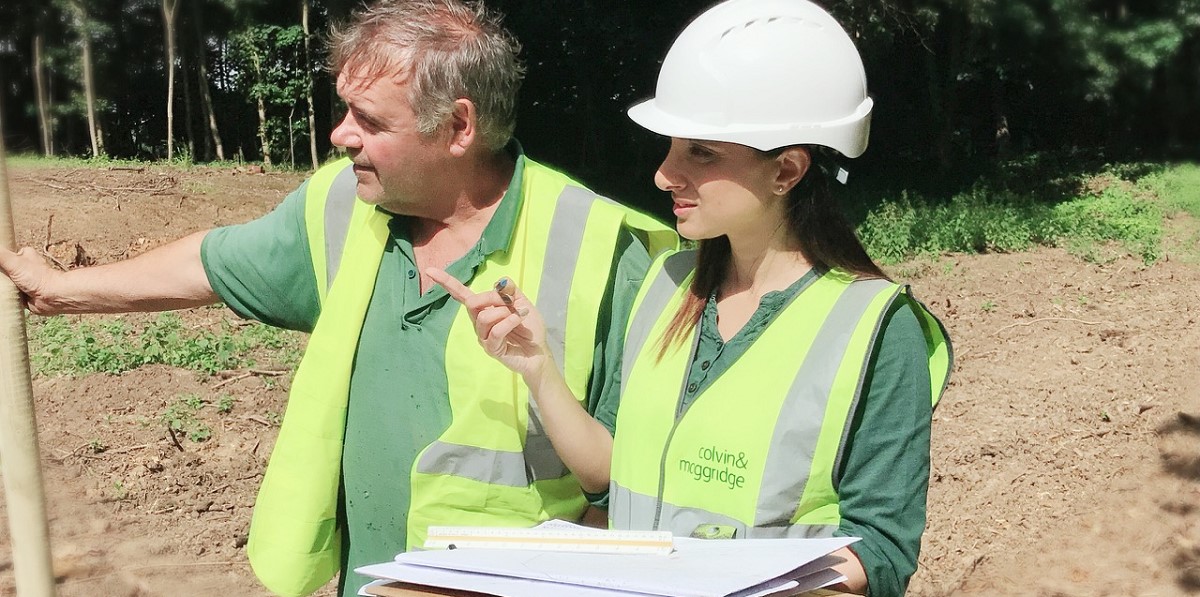Home>diy>Planning & Engineering>How To Get A Landscape Architect License In Hawaii


Planning & Engineering
How To Get A Landscape Architect License In Hawaii
Modified: October 20, 2024
Learn how to obtain a landscape architect license in Hawaii and explore the requirements and steps involved in the planning-engineering field.
(Many of the links in this article redirect to a specific reviewed product. Your purchase of these products through affiliate links helps to generate commission for Storables.com, at no extra cost. Learn more)
Introduction
Welcome to the world of landscape architecture! If you have a passion for design, an eye for detail, and a love for the environment, pursuing a landscape architect license in Hawaii can be a fulfilling career choice. As a licensed landscape architect, you will have the opportunity to shape and transform outdoor spaces, creating functional and aesthetically pleasing environments that merge seamlessly with nature.
Obtaining a landscape architect license requires a combination of education, experience, and successfully passing a licensing exam. In this article, we will guide you through the step-by-step process of getting a landscape architect license in Hawaii, providing you with the necessary information to kickstart your journey towards becoming a licensed professional in this exciting field.
From meeting the eligibility requirements to submitting the licensure application, we will cover everything you need to know. So, let’s dive right in and explore the steps involved in obtaining a landscape architect license in Hawaii!
Key Takeaways:
- Becoming a licensed landscape architect in Hawaii requires meeting educational, work experience, and ethical standards. The process involves obtaining a degree, gaining practical experience, passing the licensure exam, and maintaining professional conduct.
- Once licensed, landscape architects must stay updated with industry trends, fulfill continuing education requirements, and adhere to ethical standards. The licensure process ensures the protection of public health, safety, and welfare.
Read more: How To Get A License For Landscaping
Step 1: Meet the Eligibility Requirements
The first step towards obtaining a landscape architect license in Hawaii is ensuring that you meet the eligibility requirements set by the Hawaii Board of Landscape Architects. These requirements are designed to ensure that only qualified individuals are granted licensure. Here are the eligibility criteria to be aware of:
- Educational Requirements: In order to be eligible for a landscape architect license in Hawaii, you must have completed a degree program in landscape architecture from an accredited college or university. The program should be recognized by the Landscape Architectural Accreditation Board (LAAB).
- Work Experience: Along with the educational requirement, you must also have practical work experience in the field of landscape architecture. Typically, you will need to have a minimum of two years of work experience under the supervision of a licensed landscape architect. This experience will allow you to apply theoretical knowledge to real-world projects and develop essential skills.
- Passing Background Check: As part of the licensure process, you will need to undergo a background check. This is to ensure that you have an ethical and professional track record, free from any disciplinary actions or criminal convictions that may jeopardize your ability to practice landscape architecture responsibly.
- Good Moral Character: The Hawaii Board of Landscape Architects requires applicants to demonstrate good moral character. You will need to provide references from professionals who are familiar with your character and work ethic, attesting to your honesty, integrity, and professionalism.
- Continuing Education: Once you obtain your landscape architect license, you will be required to maintain and update your knowledge through continuing education courses. These courses ensure that you stay up to date with the latest advancements, techniques, and regulations in the field of landscape architecture.
It’s important to thoroughly review and understand the eligibility requirements before proceeding with your application for a landscape architect license in Hawaii. By ensuring that you meet these requirements, you will set yourself up for success in your journey towards becoming a licensed landscape architect.
Step 2: Obtain a Degree in Landscape Architecture
In order to pursue a landscape architect license in Hawaii, it is essential to obtain a degree in landscape architecture from an accredited college or university. This educational foundation will provide you with the necessary knowledge and skills to excel in the field of landscape architecture.
When selecting a degree program, it is important to choose one that is recognized by the Landscape Architectural Accreditation Board (LAAB). The LAAB ensures that the program meets specific standards and prepares students to become competent and professional landscape architects.
During your studies, you will gain a comprehensive understanding of various aspects of landscape architecture, including design principles, site planning, environmental sustainability, plant selection, construction techniques, and more. Your coursework will likely include a combination of design studios, technical courses, and general education classes.
Additionally, many degree programs offer opportunities for internships or cooperative education experiences, allowing you to gain hands-on experience and apply classroom concepts to real projects. These practical experiences are invaluable in developing your skills and building professional connections within the industry.
While pursuing your degree, it is also beneficial to participate in relevant student organizations and professional associations. These groups provide networking opportunities, access to industry events, and resources to further enhance your knowledge and career prospects.
Upon completion of your degree program, you will have acquired a solid foundation in landscape architecture and be ready to take the next steps towards licensure. Remember, obtaining a degree in landscape architecture is not only a requirement but also a crucial step in shaping your expertise and establishing yourself as a qualified professional in the field.
Step 3: Gain Relevant Work Experience
After obtaining a degree in landscape architecture, the next step towards acquiring a landscape architect license in Hawaii is gaining relevant work experience. This practical experience is essential for honing your skills, building your professional portfolio, and demonstrating your competency in the field.
Most licensing boards, including the Hawaii Board of Landscape Architects, require a minimum number of years of work experience under the supervision of a licensed landscape architect. Typically, you will need to accumulate at least two years of professional experience before you can apply for licensure.
During this time, you will have the opportunity to work on real-world projects and collaborate with professionals in the field. This hands-on experience will provide you with invaluable insights into the practical aspects of landscape architecture, including project management, client communication, site analysis, design implementation, and construction oversight.
To gain relevant work experience, you can seek employment at landscape architecture firms, architecture firms with a focus on landscape design, or even government agencies that deal with public spaces and urban planning. These organizations will expose you to a diverse range of projects and clients, helping you develop your skills and expand your knowledge.
Furthermore, mentorship is an integral part of gaining work experience in landscape architecture. Working under the guidance of a licensed landscape architect provides you with valuable mentorship and the opportunity to learn from an experienced professional. They can provide guidance, offer feedback on your work, and help you navigate complex projects.
During your work experience, make sure to keep a record of your projects, tasks, and responsibilities. This will be useful when preparing your licensure application as you will need to demonstrate the scope and depth of your professional experience.
By acquiring relevant work experience, you not only meet the requirements for licensure but also enhance your skills, develop your professional network, and gain a deeper understanding of the practical aspects of landscape architecture. This experience will set you apart as a competent and experienced landscape architect when you apply for licensure.
Step 4: Prepare for the Landscape Architect Registration Exam
Once you have completed your degree and gained sufficient work experience, the next step in obtaining a landscape architect license in Hawaii is to prepare for the Landscape Architect Registration Exam. This exam evaluates your knowledge and competency in various aspects of landscape architecture.
The Landscape Architect Registration Exam, also known as the LARE, is administered by the Council of Landscape Architectural Registration Boards (CLARB). It consists of multiple sections that cover topics such as site design, grading and drainage, planting design, construction documentation, and more.
Preparing for the LARE requires dedication, commitment, and a structured study plan. Here are some steps to help you in your preparation:
- Review Exam Content: Familiarize yourself with the exam content and understand the areas that will be tested. This will allow you to focus your study efforts accordingly.
- Utilize Study Resources: There are various study resources available, including review books, online courses, and practice exams. These resources can help you understand the exam format, practice sample questions, and strengthen your knowledge in specific subject areas.
- Create a Study Schedule: Set aside dedicated time each day or week to study for the exam. Create a schedule that includes reviewing study materials, completing practice exams, and revisiting areas that require additional attention.
- Join Study Groups: Consider joining or forming a study group with fellow aspiring landscape architects. Collaborating with others can provide different perspectives, share study materials, and offer support during the preparation process.
- Seek Guidance from Professionals: Reach out to licensed landscape architects or industry professionals who have successfully passed the LARE. They can provide insights, tips, and guidance to help you navigate the exam preparation journey.
Remember to focus not only on theoretical knowledge but also on the practical application of landscape architecture principles. The exam is designed to assess your ability to analyze scenarios, make informed decisions, and demonstrate your competence in real-world situations.
As you prepare for the exam, don’t overlook the importance of self-care. Proper rest, exercise, and managing stress are essential for maintaining focus and optimal performance during the exam.
By thoroughly preparing for the Landscape Architect Registration Exam, you will increase your confidence, improve your chances of success, and be one step closer to obtaining your landscape architect license in Hawaii.
To get a landscape architect license in Hawaii, you must have a degree from an accredited program, complete work experience, and pass the LARE exam. Check the Hawaii Board of Landscape Architects for specific requirements.
Step 5: Pass the Landscape Architect Registration Exam
After dedicating time and effort to prepare for the Landscape Architect Registration Exam (LARE), it is time to put your knowledge and skills to the test. Passing the exam is a crucial step towards obtaining a landscape architect license in Hawaii.
The LARE is a comprehensive exam that assesses your competency in various aspects of landscape architecture. It consists of multiple sections, each focusing on different areas of the profession, including site design, grading and drainage, planting design, construction documentation, and more.
Here are some tips to help you succeed in passing the LARE:
- Review Exam Content: Familiarize yourself with each section of the exam and the specific topics that will be covered. Focus your study efforts on these areas and ensure you understand the fundamental concepts and principles.
- Practice Time Management: The exam is time-limited, so it is essential to practice managing your time effectively during the preparation phase. Familiarize yourself with the amount of time allocated for each section and practice answering questions within that timeframe.
- Complete Practice Exams: Take advantage of practice exams to simulate the actual testing environment and assess your readiness. These practice exams will help you identify areas where you need more study and gain confidence in your test-taking abilities.
- Stay Updated with Current Practices: Landscape architecture is a dynamic field with evolving practices and technologies. Stay updated with current trends, codes, and regulations to ensure your knowledge remains relevant and up-to-date for the exam.
- Manage Test Anxiety: It is normal to feel nervous before and during the exam. To manage test anxiety, practice relaxation techniques such as deep breathing and positive visualization. Remind yourself of the effort you have put into preparing and trust in your abilities.
On the day of the exam, arrive early, well-rested, and prepared. Read each question carefully, manage your time wisely, and answer to the best of your knowledge. Remember that the exam is designed to assess your competency, so be confident in your abilities and approach each question with a calm and focused mindset.
Passing the LARE is a significant achievement and brings you one step closer to obtaining your landscape architect license. Celebrate your accomplishment and take pride in the knowledge and skills you have acquired throughout your journey.
After successfully passing the LARE, you can proceed to the next steps of the licensure process, including submitting your application and fulfilling any additional requirements set by the Hawaii Board of Landscape Architects.
Step 6: Submit the Application for Licensure
Once you have passed the Landscape Architect Registration Exam (LARE), it is time to take the next step towards obtaining your landscape architect license in Hawaii. Step 6 involves submitting the application for licensure to the Hawaii Board of Landscape Architects.
The application process requires careful attention to detail and thorough documentation. Here are the key steps to follow when submitting your application:
- Review Application Requirements: Before starting the application process, carefully review the requirements set by the Hawaii Board of Landscape Architects. Familiarize yourself with the necessary documents, fees, and any additional requirements that need to be met.
- Complete the Application Form: Fill out the application form provided by the licensing board accurately and completely. Ensure that all required fields are filled in and that your information is up to date.
- Collect Supporting Documentation: Along with the application form, you will need to submit various supporting documents. These may include official transcripts from your accredited degree program, proof of work experience, and verification of passing the LARE.
- Prepare a Professional Portfolio: A professional portfolio is an essential component of your application. It showcases your best work, illustrating your skills, creativity, and understanding of landscape architecture. Include examples of design projects, technical drawings, and any other relevant materials that demonstrate your capabilities.
- Write a Personal Statement: A personal statement allows you to convey your passion for landscape architecture and your commitment to the profession. It is an opportunity to showcase your unique perspective, experiences, and future goals in the field.
- Submit Application and Fees: Once you have gathered all the required documents and completed the application form, submit your application along with the necessary fees. Ensure that you follow the instructions provided by the licensing board regarding the payment method and the amount due.
It is important to double-check all your documents and the information you provide before submitting your application. This ensures that there are no errors or omissions that could potentially delay the licensure process.
After submitting your application, allow some time for the Hawaii Board of Landscape Architects to review and process it. Be patient and prepared to provide any additional information or clarification if requested.
By completing and submitting your application for licensure, you are one step closer to becoming a licensed landscape architect in Hawaii. This process is a culmination of your education, experience, and dedication to the profession, and it signifies your readiness to take on the responsibilities of a licensed professional in this dynamic field.
Step 7: Pay the Required Fees
As you progress towards obtaining your landscape architect license in Hawaii, it is important to fulfill the financial obligations associated with the licensure process. Step 7 involves paying the required fees to the Hawaii Board of Landscape Architects.
When submitting your application for licensure, there will be certain fees that you need to pay in order to cover administrative costs and support the operations of the licensing board. These fees can vary, so it is important to carefully review the instructions provided by the board and ensure that you are submitting the correct amount.
Here’s what you need to know about paying the required fees:
- Review the Fee Schedule: The Hawaii Board of Landscape Architects will provide a fee schedule that outlines the specific fees associated with the licensure process. Take the time to review this document and familiarize yourself with the applicable fees.
- Payment Method: The licensing board will specify the acceptable methods of payment. This may include online payment options, checks, or money orders. Ensure that you follow the instructions provided and make your payment using the approved method.
- Submit the Correct Amount: It is essential to pay the correct amount of fees as indicated by the fee schedule. Failing to do so may result in delays in processing your application. Double-check the fee schedule and calculate the total amount accurately before making your payment.
- Keep Financial Records: It is advisable to keep a record of your fee payment, including proof of payment, receipts, and any communication related to financial transactions. This can serve as documentation of your compliance and may be required for future reference.
Ensure that you submit your payment promptly and meet any specified deadlines. Late payment or insufficient funds may result in additional fees or delays in the processing of your application.
By paying the required fees, you contribute to the operation and maintenance of the licensing board, which plays a critical role in upholding the standards and integrity of the landscape architect profession. Your financial contributions help support the board in its mission to protect public health, safety, and welfare.
Remember to consult the Hawaii Board of Landscape Architects for the most up-to-date information regarding fees and payment methods. Adhering to the fee requirements demonstrates your commitment to fulfilling all necessary obligations on your path towards becoming a licensed landscape architect in Hawaii.
Step 8: Maintain the Landscape Architect License
Obtaining a landscape architect license in Hawaii is a significant accomplishment, but it’s important to remember that maintaining your license requires ongoing commitment and compliance with certain requirements. Step 8 involves actively participating in the maintenance of your landscape architect license.
Here are some key aspects to consider when it comes to maintaining your landscape architect license in Hawaii:
- Continuing Education: As a licensed landscape architect, you will be required to participate in continuing education to stay current with industry trends, advancements in technology, and changes in regulations. The Hawaii Board of Landscape Architects sets specific requirements for continuing education hours that you must complete within a defined timeframe. Keep a record of your continuing education activities and ensure you meet the requirements for license renewal.
- Renewal Period: Licenses are typically valid for a specific period, after which you will need to renew your license. Be aware of the renewal period for your landscape architect license and submit the necessary documentation and fees in a timely manner. Failure to renew your license on time may result in penalties or the loss of your licensure status.
- Professional Conduct: As a licensed landscape architect, you are expected to adhere to professional standards and ethical conduct. Maintain high standards of professionalism in all aspects of your work to uphold the reputation of the profession and ensure the safety and welfare of the public. Avoid engaging in any activities that may compromise the integrity of the landscape architect profession.
- Stay Informed: Keep yourself informed about changes, updates, and advancements in the field of landscape architecture. Stay connected with professional organizations, attend industry events, and stay up to date with relevant publications and resources. This will help you remain knowledgeable and competitive in your profession.
Maintaining your landscape architect license is an ongoing responsibility that ensures your ongoing competence, professionalism, and dedication to the field. By actively participating in continuing education, adhering to ethical standards, and staying informed, you demonstrate your commitment to providing high-quality services and contributing to the advancement of the landscape architecture profession.
Remember to regularly check for updates and requirements from the Hawaii Board of Landscape Architects to ensure you are meeting all necessary obligations to maintain your license. By doing so, you can continue practicing as a licensed landscape architect while contributing to the growth and development of the field.
Conclusion
Congratulations on embarking on the journey to obtain a landscape architect license in Hawaii! Becoming a licensed landscape architect requires dedication, education, experience, and a commitment to the profession. Throughout the steps outlined in this guide, you have learned about the eligibility requirements, obtaining a degree, gaining work experience, preparing for the licensure exam, submitting the application, paying the required fees, and maintaining the license.
By meeting the educational requirements, gaining relevant work experience, and passing the Landscape Architect Registration Exam (LARE), you have demonstrated your knowledge, skills, and capability to design and shape the natural environment. The licensure process ensures that licensed landscape architects uphold professional standards, ethics, and protect the health, safety, and welfare of the public.
As a licensed landscape architect in Hawaii, you have the opportunity to contribute to the creation of beautiful, sustainable, and functional outdoor spaces. Your expertise will impact the physical landscape, improving the quality of life for communities and individuals. Remember to continuously further your knowledge through continuing education, stay informed about industry trends, and maintain a commitment to professionalism and ethical conduct.
Obtaining and maintaining a landscape architect license is not only a professional achievement but also a responsibility to serve the community and protect the environment. Embrace the challenges and opportunities that come with being a licensed professional, and continue to expand your skills, network, and impact in the field of landscape architecture.
So, keep your passion for design alive, be curious, and constantly strive for excellence. Your dedication to the profession will positively shape the landscapes of Hawaii and contribute to a more sustainable and beautiful world.
Frequently Asked Questions about How To Get A Landscape Architect License In Hawaii
Was this page helpful?
At Storables.com, we guarantee accurate and reliable information. Our content, validated by Expert Board Contributors, is crafted following stringent Editorial Policies. We're committed to providing you with well-researched, expert-backed insights for all your informational needs.














0 thoughts on “How To Get A Landscape Architect License In Hawaii”